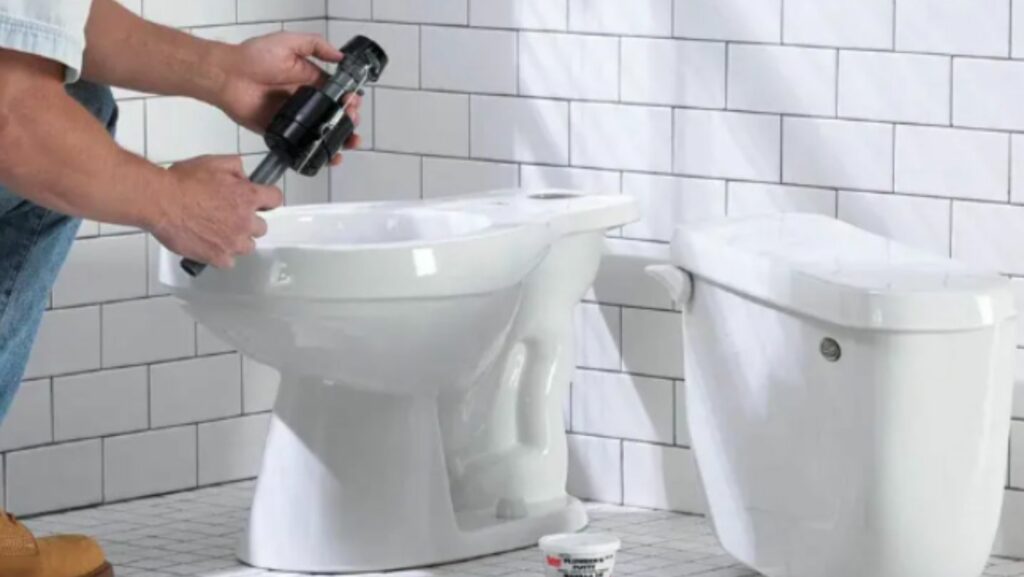Installing toilets is nevertheless one of the critical stages in constructing new sanitary facilities and their repair. Properly installed toilets provide safety and comfort while using bathrooms and minimize the risks connected with water supply and sewage. So, explore the specifications of toilets with us and reveal the main points about the proper installation of toilets.
-
Preparatory Work
1. 1. Preparation of tools: Before the installation, one needs to make a proper plan for where the toilets should be established, bearing in mind all the sanitation and hygiene standards.
1. 2. Level the floor. The floor’s surface to which you intend to fix the toilet should be flat and strong. If needed, fill or grade the area with special compounds. Also, check the condition of the floor, and if the floor is tiled, ensure that the floor tiles are well-fixed and do not crack.
1. 3. Investigate the water and sewerage systems. Ensure that all water and sewerage pipes are well-checked and without any cracks—correct damaged or worn pipes as required for pipes previously used for a long time. The staff at Superior Plumbing and Heating follows all the toilet installation and repair theories. They provide services across Canada, including Kitchener: https://superiorplumbing.ca/kitchener/. They also know how to repair toilet flange and toilet flush.
2. Installing the Sewer Outlet
2. 1. Decide where the sewer outlet will be located based on the surrounding sanitary fixtures and the main sewer line. The position of such an outlet should be so that water can freely drain without hindrance.
2. 2. Putting in the sewer pipe. Join the sewer pipe to the main water pipe, ensuring all connections are well secured. Special sealing sleeves and sealant are to be used. It is important to provide the correct position of the pipe; if the position is not satisfactory, more elbows and connectors must be fitted.
3. Installing the Toilet
3. 1. Pre-installation: Use a spirit level to put the toilet in the intended place and ensure the bathroom top is correct. The placement of the holes drilled for the mounting should also be identified. The markings should be accurate so they are not affected when assembled with others.
3. 2. Connecting the toilet Install screws and dowels for the bathroom and drill the holes to secure them tightly. As sure as it is, ensure that the bathroom does not move; it has to be well seated on the floor. In order not to scratch the ceramic or damage it in any way when adjusting the screws, use plastic washers.
4. Having a Link to the Water Supply
4. 1 Installing the shut-off valve Fixed the shut-off shut-off valve whereby the water pipe used to connect the toilet cistern is connected. This will enable you to turn off the water supply if you need to. In the reference design, the tap should be conveniently mounted and should facilitate effective shutting off of the water.

4. 2. Connecting the cistern: Switch the faucet to the ‘off’ position and fit a flexible hose from the main water supply to the cistern. All connections should be checked for leaks so no leaks can be seen. The link has to be robust to stand the pressure of hydropower.
5. Final Work
5. 1. Flush it. Open the water and check the toilet’s operation. All connections should be tightened up, and the water drains properly. He should have examined several times to ensure there were no leakages and that all the apparatus was in order.
5. 2. Sealing and finishing: To ensure a proper fit between the toilet and the floor and between the cistern and the wall, one has to apply silicone sealant. This shall help restrict the entrance of the water and dirt in those complex regions of the car. Ensure that you do not leave lots of the sealant while applying so that it can look neat.
6. Additional Recommendations
6. 1. They involve adhering to the manufacturer’s guidelines. Follow the manufacturer’s instructions when installing a toilet and other related equipment. It will assist when something is installed wrong and in warranty services where one needs to be precise.
6. 2. Prevention and maintenance: One should occasionally assess the state of the fixings and connections to avoid any leakage occurrences. Clean the toilets with products that do not damage the ceramic surface and the drainage holes.

6. 3. Getting some advice When you have any doubts or problems, it is better to turn to the specialists, namely the plumbers. Accurate toilet installation will experience a longer duration without causing issues in the bathroom.
Proper toilet installation, in particular, helps allow bathroom users to use the toilet comfortably and without danger. Adhering to all the outlined steps will guarantee the lasting and successive working of the sanitary equipment. Remember that if you have any questions or problems, it is always better to address professional master plumbers. Call Kitchener Plumbers and get high-quality service from Superior Plumbing and Heating. An efficient choice of toilet will enhance the bathroom experience and provide your home with any possible water damage that may arise from poor toilet installation.

